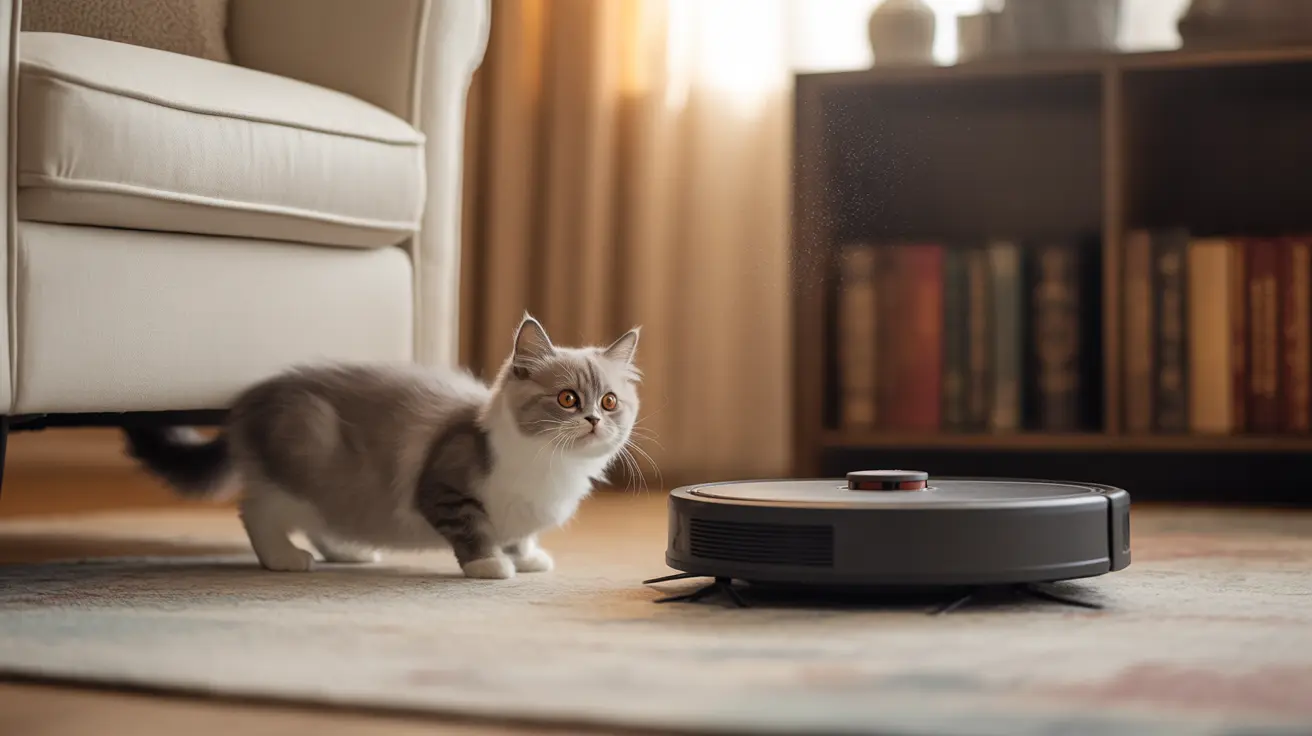As cat owners, we often wonder how to scare a cat away from unwanted behaviors, but understanding what naturally frightens our feline companions is equally important. From everyday appliances to seemingly harmless objects, cats can develop fears of various household items – and knowing these triggers helps us create a more comfortable environment for our pets.
Let's explore the most common household items that trigger fear responses in cats, understand why these reactions occur, and learn how to help our pets cope with their anxieties.
Loud Appliances and Sudden Noises
Cats have incredibly sensitive hearing, capable of detecting frequencies up to three times higher than humans can perceive. This heightened sensitivity makes them particularly vulnerable to loud household appliances:
- Vacuum cleaners
- Blenders and food processors
- Hair dryers
- Washing machines and dryers
These devices not only produce intense noise but also create vibrations that cats can feel through their sensitive paw pads, potentially triggering their fight-or-flight response.
Unexpected Movement and Unfamiliar Objects
Cats are naturally cautious of unpredictable movement and unfamiliar items in their environment. Common triggers include:
- Ceiling fans
- Rolling objects
- Automated devices
- New furniture or decorations
This wariness stems from their instinctive need to protect themselves from potential predators in the wild, making sudden or unusual movements particularly threatening.
Texture and Surface Triggers
Certain materials and surfaces can create intense discomfort or fear in cats:
- Aluminum foil
- Sticky tape
- Plastic bags
- Slippery floors
These items often produce unexpected sensations or sounds that cats find unsettling, leading to avoidance behaviors or startled responses.
Environmental Factors and Strong Scents
Cats have highly developed olfactory systems, making them sensitive to various environmental factors:
- Essential oils
- Cleaning products
- Citrus scents
- Strong perfumes
These intense smells can overwhelm their sensitive noses and trigger stress responses or avoidance behaviors.
How to Help Your Cat Cope with Fears
While it's important to know how to scare a cat away from dangerous areas, it's equally crucial to help them manage their natural fears:
- Create safe spaces where they can retreat
- Introduce new items gradually
- Use positive reinforcement
- Maintain consistent routines
- Consider anxiety aids recommended by veterinarians
Frequently Asked Questions
What common household items are most likely to scare my cat and why?
The most common fear-inducing items include vacuum cleaners, loud appliances, and unfamiliar objects. These items trigger fear due to cats' sensitive hearing and natural instinct to avoid potential threats.
How can I safely reduce my cat's fear of loud noises like vacuum cleaners and fireworks?
Gradual desensitization, creating safe spaces, and using positive reinforcement can help reduce fear. Start by exposing your cat to the noise at a distance, rewarding calm behavior, and slowly decreasing the distance over time.
Why do cats often jump or bolt when they see cucumbers or aluminum foil?
Cats typically react this way because these items appear suddenly or have unfamiliar textures. With cucumbers specifically, the shape and sudden appearance may trigger their instinctive fear of snakes.
What smells or surfaces should I avoid to prevent scaring my cat at home?
Avoid strong citrus scents, essential oils, and harsh cleaning products. For surfaces, minimize exposure to sticky tape, aluminum foil, and slippery floors that can make cats feel unstable.
How can I help my cat adjust to new furniture or environmental changes without causing stress?
Introduce changes gradually, maintain familiar items and routines, and provide positive associations through treats and praise. Allow your cat to investigate new items at their own pace while ensuring they have access to safe retreat spaces.
Conclusion
Understanding what frightens our cats helps us create a more comfortable living environment while respecting their natural instincts. While knowing how to scare a cat might be useful in certain situations, focusing on reducing fear triggers and building trust will lead to a happier, more confident feline companion.






